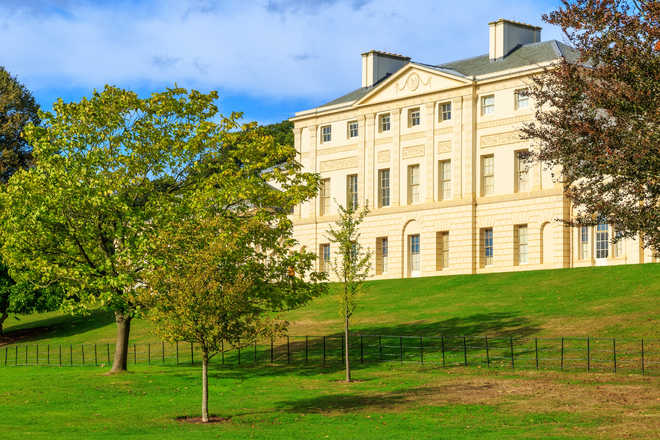
In word and in practice: Still standing tall, Kenwood House in London saw history being made when Lord Mansfield (left) provided excellent education and a privileged life to both his adopted daughters.
Maniki Deep
A visit to Kenwood House, Hampstead Heath, London, engagingly unfolds the history of William Murray, 1st Earl of Mansfield (March 2, 1705 – March 20, 1793) and the extraordinary story of his nephew’s daughter, a black girl of mixed race, named Dido Belle.
In the mid-18th century, Kenwood House, set in 800 acres of grassland and woods at the northern edge of London, was the residence of England’s most senior judge, The Lord Chief Justice Mansfield. He lived with his wife and two adopted daughters — children of two of his nephews, because both lost their mothers. The two girls enjoyed excellent education and a luxurious, privileged lifestyle. They were Elizabeth Murray, daughter of Viscount Stormont, British Ambassador to Vienna, and Dido Elizabeth Belle, illegitimate daughter of a Royal Navy Officer, John Lindsay, and a black woman.
Lord Mansfield’s judgments became the stepping stones towards the abolition of the slave trade. His choices and motives have been fiercely debated ever since. Presented in paintings, case notes and reports, the exhibition at Kenwood House includes accounts of James Somerset and the Zong trials.
In 1772, when Dido was seven years old, James Somerset, an enslaved African, was severely beaten, but escaped. He was eventually caught to be shipped to Jamaica. He was brought before Lord Mansfield under the habeas corpus act (present the body). Asked to decide when a man is free, Lord Mansfield ruled, after five-month deliberation, that forcibly sending Somerset abroad because he absented himself from his service was illegal as ‘no authority can be found for it in the laws of the country and therefore James Somerset must be discharged’.
The ruling was interpreted to mean that all enslaved people in England must be discharged and gave a great boost to the abolitionists. Lord Mansfield, however, after considering an economic disaster following abolition, made it clear he intended the ruling to pertain only to Somerset.
Another case that caused public outrage was the Zong case. Zong was a slaving vessel from which 132 men, women and children were thrown overboard and drowned so that the owners could claim compensation. The insurers demanded compensation and the case was brought to Lord Mansfield. Mansfield said that a human being could not be insured and called for a retrial. The slavers and insurers withdrew the case and from then on no-one could insure enslaved people.
The extent to which Lord Mansfield’s position as legal guardian to Dido Belle affected his judgment is much debated. Her life was indeed unique. Lord Mansfield gave her every advantage to be part of England’s social elite. From diaries and records, she seemed to be a much-loved member of the family. Lord Mansfield was fond of Dido, who acted as his secretary. It also shows he had tremendous faith in her discretion because she would have been reading about high-level government business. In his will, Lord Mansfield stated, “I confirm to Dido Elizabeth Belle her freedom”. He also paid her a handsome maintenance allowance.
Some months after Mansfield’s death, Dido married John Davinier, a gentleman’s steward at the highest level, and they had three sons. Dido died in 1804.
Lord Mansfield’s strong opposition to slavery in his attitude and judgments were pronounced and stoked the fires of the abolitionist movement in Britain. Eventually, slavery was formally abolished in Britain and gradually its colonies in 1833 by an Act of Parliament. Abolition of slavery spread waves in the 19th century with Spain and its colonies taking the lead in 1811; Denmark in 1846; France in 1848; The Netherlands abolished slavery in the Dutch Caribbean colonies in 1861; the U.S. Constitution banned slavery in 1865; Cuba in 1886 followed by Brazil in 1888.
Finally, in 1948, the United Nations General Assembly adopted the Universal Declaration of Human Rights. “No one shall be held in slavery or servitude; slavery and slave trade shall be prohibited in all their forms,” it read.
However, feudalism and the concept of bonded labour were rampant in India for a long time. It was only in 1976 that the Bonded Labour System Act outlawing traffic in human beings and forced labour was imposed by an Act of Parliament. Still, as long as the scourge of poverty and illiteracy debases the people of India, true freedom will not come. It is up to the organised efforts of the State, institutions, social workers and the awakened public at large to root out these evils bedeviling the country.



























